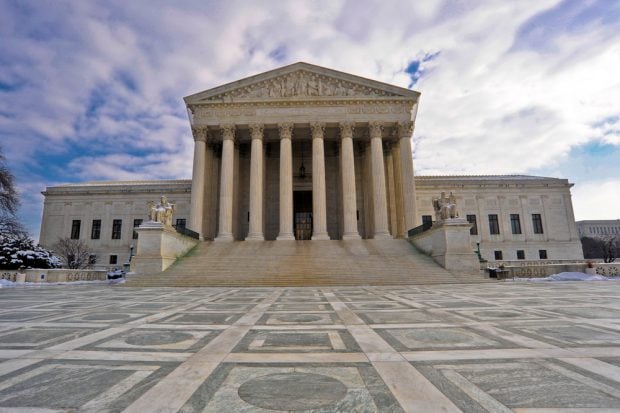The credit union industry employs 217,000 people, has $680million in assets and serves 85 million members. With total assetsexpected to jump to $900 billion by 2010, it is essential thatexecutives make every effort to grow with minimal risk and torespond to changing conditions with the most efficient, effectiveapproach.
|Executives need to think strategically about how to best managethe new facilities that are appearing across the nation. The numberof credit union branches grew from 18,805 in 2003 to 19,478 in2005. Land and building, as a line item, grew at a staggering11.58% since 2003, from nearly $9 billion to nearly $11.2 billion.This growth in fixed assets has been matched with growth inoverhead. Office occupancy expense increased from 6.5% ofnon-interest expense in 2003 to almost 7% of non-interest expensein 2005, or $1.47 billion. Branch growth averages 1.53% on acompounded basis since 2003. Even if branch growth slows to 1.25%,the credit union industry will be adding 1,250 branches by year-end2010.
|How do credit unions manage this growth in asset andfacility-related expenses? What do they need to do to improvemember service while maintaining fiscal discipline and, at the veryleast, maintaining operational efficiency and effectiveness? Creditunions must take a holistic approach to managing the deployment offixed assets. The 6P approach to strategic retail delivery is acomprehensive methodology for managing credit union buildingprograms.
|The 6P approach is comprised of the following components:
|oPlan: In the words of Dr. Stephen Covey, “begin with the end inmind.” Always, always begin with a plan.
|oPhilosophy: Know your limits as an institution and understandyour philosophy toward your market, field of membership, members,employees, technology, and facility design and development.
|oProcess: “Technically elegant” solutions breed better memberservice, heightened employee productivity, and reduced operationaloverhead.
|oPeople: Recruit, train, and inspire employees to outpace thedemands of members and management alike; more importantly, know thepeople who walk through your doors and their likes, dislikes, andmost of all, their needs.
|oPerformance: What gets measured gets done; efficiency andgrowth measures are certainly key, but measuring a service drivenwork ethic is even more important. oPlace: The ultimate place liesat the intersection of a great location and people-focused design.The strategic retail delivery plan is the foundation for all theother implemental components of the plan. Each is required. As aliving/breathing institution, made up of people, places andprocess, credit unions cannot take shortcuts. This is trueregardless of size, geographical location, or the composition ofone's membership. Whether you devise your plan yourself or by usingan outside advisor, write it down and commit to it. Commit to it byaligning rewards with 1) the completion and implementation of theplan and 2) the outcomes associated with implementation.
|Descartes said “to be is to do”. First one must see what is tobe done (the plan) and then determine how they will approach whatis to be done. This philosophy is a key ingredient in the strategicretail delivery planning cycle. Leaders of credit unions mustmarshal their troops around a philosophy, or a set of governingprinciples. How do we serve–brick/mortar, electronically,hybrid–and to what extent in each channel? What design and brandingphilosophy do we want to have in each retail outlet? Do we want tobe cutting-edge, bleeding-edge, or the trailing edge? Again, writedown your philosophy.
|As the credit union considers branch expansion, it must considerthe process employed by the branch or branches internally andbetween the main or regional office and the branch. Internally,does the credit union want to employ a more open, nontraditionalretail delivery system or does it desire the traditional tellerline and member service approach? How is technology leveraged tocreate efficiency and support your employee's relationship with themember? Can you see the entire member relationship and are youequipped to enhance it? Does the main office support the branch'sendeavors knowing full well that Branch A and Branch B may havevery different needs? Document your process and commit to it.
|Hire, train and retain the best employees. Depending on yourphilosophy and process, this aspect of strategic retail deliverycould be similar or very different from you current peoplemanagement initiatives. Have a personnel deployment plan for eachand every retail outlet in place. And don't forget, people want towork with other people. It has been proven time and time again.Focus your people management on the members walking through yourdoors. Document the people management program. There should be adirect correlation between your people management program andmember service and credit union performance. Performance
|A New York Times article suggested that numbers alone do notdenote a higher life form. We are a culture preoccupied withnumbers, and within the financial institution realm, it's almostobsessive. Higher life form or not, numbers are important.Performance is important. Financial, human resource and machineperformance can all be gauged. Measuring philosophy, process, andother intangible elements can be, at best, challenging. Moreimportantly, understanding a member's financial performance andsupporting their initiatives (no doubt, they are struggling withtheir own 6P program, whether they know it or not!) is the nextlevel in measuring strategic retail delivery success.
|Location, location, and location. Location is the foundation ofreal estate development and has been throughout the ages. Dependingon the desired use, the emphasis on location will change, but it isat the core of choosing where to place your institution. Find theright location and then design the right facility–brand it on theoutside and the inside. Incorporate your philosophy, deploy yourprocess, and engage the right people to create superior memberservice. Most importantly, remember that the ideal place blendsboth location and a people-focused design.
|Arp D. Trivedi is senior consultant with Level5 of Atlanta,Ga. He can be reachedat 404-761-0008.
Complete your profile to continue reading and get FREE access to CUTimes.com, part of your ALM digital membership.
Your access to unlimited CUTimes.com content isn’t changing.
Once you are an ALM digital member, you’ll receive:
- Critical CUTimes.com information including comprehensive product and service provider listings via the Marketplace Directory, CU Careers, resources from industry leaders, webcasts, and breaking news, analysis and more with our informative Newsletters.
- Exclusive discounts on ALM and CU Times events.
- Access to other award-winning ALM websites including Law.com and GlobeSt.com.
Already have an account? Sign In
© 2024 ALM Global, LLC, All Rights Reserved. Request academic re-use from www.copyright.com. All other uses, submit a request to [email protected]. For more information visit Asset & Logo Licensing.









